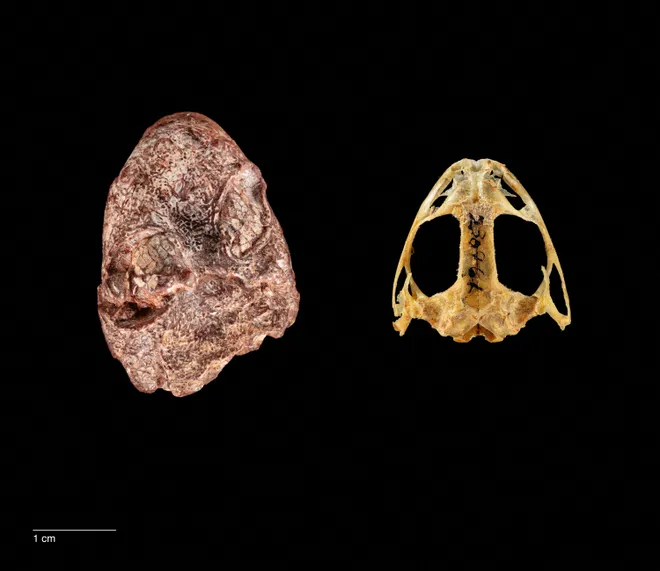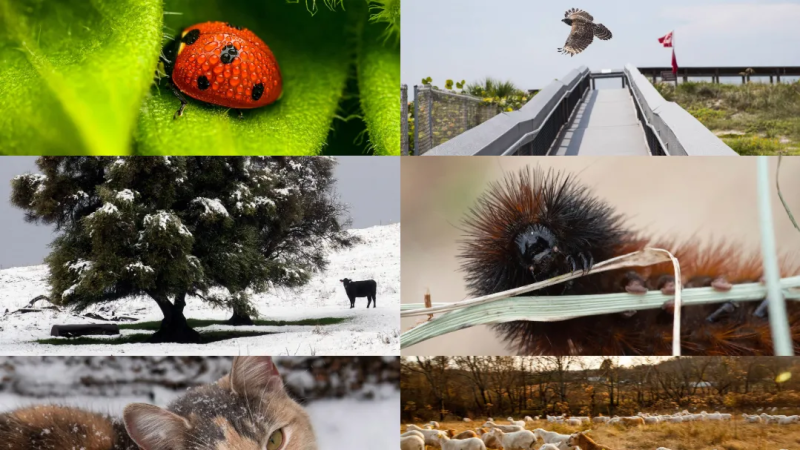Behold, Kermitops: Fossil named after Kermit the Frog holds clues to amphibian evolution
Scientists have discovered evidence of a prehistoric species of amphibian that could be the precursor to modern species − and they bestowed upon it the great honor of being named after a green froggy icon.
Paleontologists with the Smithsonian National Museum of Natural History announced the discovery Thursday, dubbing the fossilized skull of a 270 million-year-old amphibian called Kermitops gratus, named after none other than Kermit the Frog.

“Using the name Kermit has significant implications for how we can bridge the science that is done by paleontologists in museums to the general public,” Calvin So, a doctoral student at the George Washington University and the lead author on the new paper, said in a press release. “Because this animal is a distant relative of today’s amphibians, and Kermit is a modern-day amphibian icon, it was the perfect name for it.”
'Beautiful' ancient creature:Scientists unveil 240 million-year-old 'Chinese dragon' fossil
What a skull can tell us about Kermitops

The fossil, which shed new light on the evolution of modern amphibians, previously sat unstudied and unidentified in the Smithsonian collection for about 40 years. In a paper published in the Zoological Journal of the Linnean Society, scientists identified the tiny skull, measuring only around 1.2 inches long, as the precursor to modern frogs, salamanders and caecilians (limbless, worm or snake-shaped amphibians).
Researchers believe Kermitops gratus lived in prehistoric Texas between 298.9 million and 272.3 years ago during a time known as the early Permian Epoch period.
They also believed Kermitops, despite being named after a frog, had a body more similar to a salamander, probably measuring between six to seven inches long.

The name Kermitops translates to "Kermit face," a name scientists chose because of the skulls' resemblance to the muppet character. With a rounded snout and long eye sockets, the creature's skull also appeared to have additional anatomy no longer present in modern amphibians, likely phased out during evolution. Its eye sockets showed evidence of palpebral bones or eyelid bones, for example, which are no longer present in today's species.
According to a press release from the Smithsonian, it also had an elongated snout but a very short section of the skull behind its eye, which may have helped the creature snap up tiny insects to eat.
'The first dolphin of its kind':Remains of ancient giant dolphin discovered in the Amazon.
Discovering new origins
While scientists determined the fossil to be part of a group called temnospondyls, primitive amphibian relatives that lived for over 200 million years, the unique features led them to conclude this fossil belonged to a previously unidentified genus.
Because early fossil records following the lineage of amphibians are what the Smithsonian describes as "fragmentary," discoveries such as these enable scientists to better understand and trace back the origins of the animals that roam the Earth today.
“Kermitops offers us clues to bridge this huge fossil gap and start to see how frogs and salamanders developed these really specialized traits,” So said in the release.
Disclaimer: The copyright of this article belongs to the original author. Reposting this article is solely for the purpose of information dissemination and does not constitute any investment advice. If there is any infringement, please contact us immediately. We will make corrections or deletions as necessary. Thank you.





